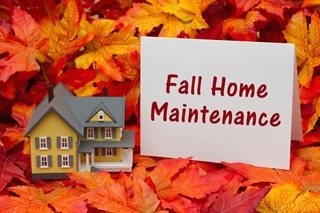
Labor Day has come and gone, so it won’t be long before the leaves start falling and cooler weather arrives. Early autumn is also the time to set aside time for tackling maintenance tasks that will improve the performance, safety and efficiency of your natural gas appliances.
Tackle fall maintenance to improve the performance,
safety and efficiency of your natural gas appliances.
Walton Gas has prepared this to-do list to help natural gas customers prepare their homes for chilly weather. Ready. Set. Tackle!
- Schedule a FURNACE checkup.
Make an appointment to have your furnace serviced by a qualified technician. Without this yearly cleaning and inspection, a system can wear itself out quickly, pump deadly carbon monoxide into your home, or simply stop working. Energystar.com says a typical checkup should include inspecting thermostat settings, controls, gas line connections, gas pressure, burner combustion and the heat exchanger.
- Change the FILTER.
Inspecting, cleaning or changing the air filter is also the easiest task you can complete to help your furnace operating at peak efficiency. Change your air filter before turning the heater on, and remember to check it once a month through the winter. Remember: While some filters are advertised to last several months, people with pets or old houses with a lot of dust should change filters monthly.
- Flush the WATER HEATER.
It’s an easy, do-it-yourself project to flush your water heater’s tank each fall. This prevents the build-up of mineral sediment deposits that can rust through its steel shell. This Old House offers good step-by-step instructions for routine water heater maintenance.
- Clean the FIREPLACE.
Although gas fireplaces are known for efficient clean burning fuel, they do need to be regularly maintained just like any other type of heating appliance. There are a variety of components including the burner, logs and grate, that can become damaged, clogged or worn from normal use. Also, soot can build up on the surfaces inside the firebox, on the doors and on the burner, which will reduce the fireplace’s efficiency. Have your fireplace and chimney professionally cleaned and inspected prior to using it. If you make an appointment now, you’ll get ahead of the busy fall season and possibly score an early-bird discount.
- Upgrade the THERMOSTAT.
Consider upgrading to a smart thermostat for improved energy efficiency and comfort. This type of thermostat offers lots of new features that out-perform traditional thermostats. See this month’s Walton Gas blog for more information.
- Check DETECTORS.
While it doesn’t save you energy, checking your smoke and carbon monoxide detectors can save your life. It’s smart to test the devices and replace the batteries every six months, making this a chore for fall and spring. Learn about carbon monoxide.
- Winterize the GRILL.
If you close the grill for winter, first give it a thorough cleaning to remove grease and food scraps so there won’t be any unpleasant surprises next spring. After shutting off the gas, remove and clean the burners and other metal parts with cooking oil to prevent rust. Then wrap the unit in a plastic bag to keep out spiders and insects that might try to nest in it. Put a protective cover over the entire grill after you’ve finishing cleaning it.
- Adjust CEILING FANS.
Adjust ceiling fans to turn clockwise. This will create an upward draft that redistributes warm air from the ceiling to the lower portions of the room.
- Clean VENTS.
Atlanta Gas Light advises natural gas consumers to keep natural gas vents unobstructed and free of debris. Be aware that some direct-vent and high-efficiency appliances have direct side wall outdoor vents and air intakes that could become obstructed in the event of an unusually heavy snowfall or ice storm.
- Inspect CLOTHES DRYER ducts.
Clean the dryer’s exhaust duct and space under and behind the appliance. Inspect the duct to ensure it hasn’t become crushed, kinked or otherwise restricted. Remove lint and dust that may have accumulated inside the dryer in accordance with the manufacturer’s recommendation. Periodically have a qualified professional clear the interior of the exhaust duct.
- Seal WINDOWS and DOORS.
Keep your natural gas heat inside where it belongs by checking windows and doors for gaps and drafts. Caulk or install self-adhesive rubber foam weatherstripping as needed. Remember: Caulking and weatherstripping wear out over time, so replace as needed. Check out this handy tutorial on do-it-yourself weatherstripping installation.
- Note RECALLS.
The U.S. Consumer Product Safety Commission (CPSC) occasionally announces safety recall programs for certain natural gas appliances and equipment. Information about product recalls that may affect your appliances is available at the CPSC website or by calling the CPSC at 1-800-638-2772. TDD/TTY 1-800-638-8270.
MORE
See the Home Maintenance Checklist prepared especially for Georgia homeowners by University of Georgia Extension.